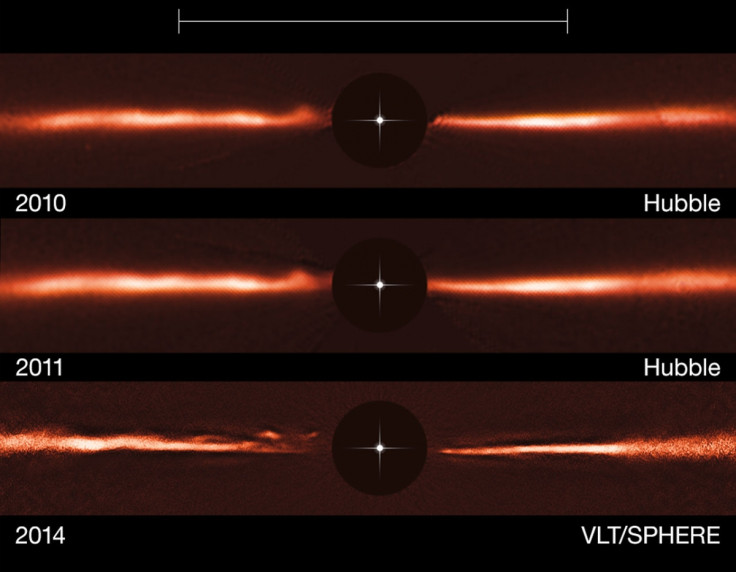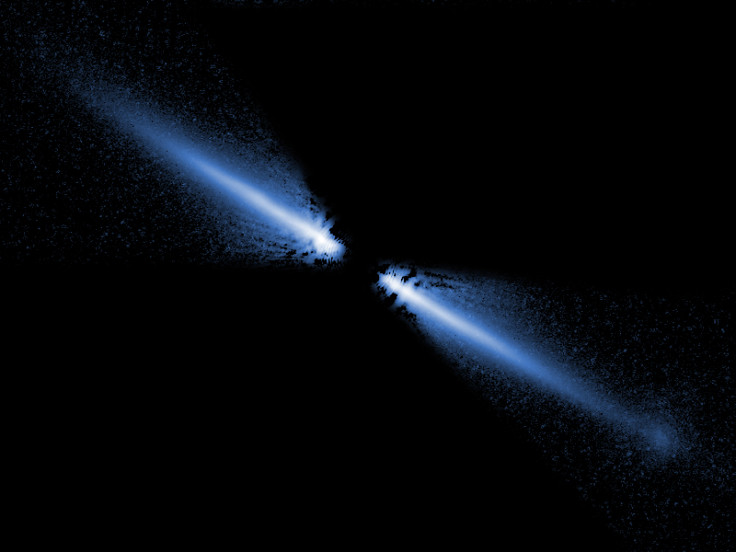Mystery never-before-seen ripples around planet-forming disk baffle Nasa and ESA scientists

Never-before-seen ripples have been detected in a planet-forming disk around a nearby star, baffling scientists from Nasa and the European Space Agency (ESA). The wave-like features were spotted around the star AU Microscopii using images from the Hubble Space Telescope and the Very Large Telescope (VLT).
AU Microscopii is 32 light years away from Earth. Its disk is made up of asteroids that have smashed together with such energy they were ground to dust. However, astronomers observing the dusty disk saw something unexpected – fast-moving ripples in the disk that are unlike anything ever observed before.
The scientists had been searching AU Mic's disk for signs of warped features that might give clues as to the locations of potential planets – debris disks like this is where planets form. Anthony Boccaletti of the Observatoire de Paris, France, lead author on the paper published in the journal Nature, said: "Our observations have shown something unexpected. The images... show a set of unexplained features in the disc which have an arch-like, or wave-like, structure, unlike anything that has ever been observed before."
They found five wave-like arches at varying distances from the star. The images, taken with the Sphere instrument on the VLT, were then compared to images taken by Hubble in 2010 and 2011. Findings showed the ripples were not only present in the earlier pictures but they had changed over time – showing they were moving extremely fast at a rate of about 40,000km/hour.

Three of the ripples were moving so fast they appear to be escaping from the gravitational attraction of the star – ruling out the possibility they are caused by objects (like planets) disturbing material in the disk. Scientists also noted the waves further away from the star are moving faster than the ones closer to it.
While the researchers have no way of knowing what the ripples are, they said it is possible they are linked with flares from the star, which lets of huge bursts of energy very suddenly from or near its surface. "One of these flares could perhaps have triggered something on one of the planets - if there are planets - like a violent stripping of material which could now be propagating through the disc, propelled by the flare's force," study co-author Glenn Schneider said.
Scientists now plan to continue to observe the AU Mic system to work out what's going on. The authors wrote: "Several mechanisms were considered that might produce structures in a dusty disk, some involving a gas-rich disk, spiral waves, resonances with planetary-mass objects, stellar activity, or outflows from planets.
"But the distinct morphology of the features, their high apparent speeds incompatible with low-eccentricity orbits, and their spatial localization on only one side of the disk are at odds with most scenarios. Therefore, we cannot offer a single explanation for these features; additional data are needed to do so."
© Copyright IBTimes 2025. All rights reserved.






















